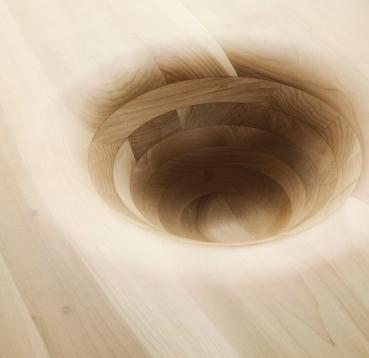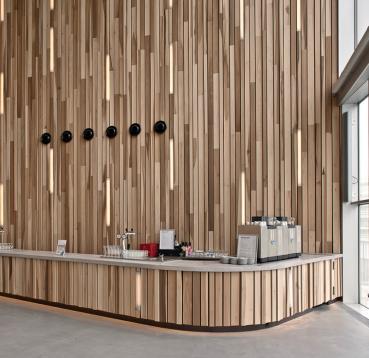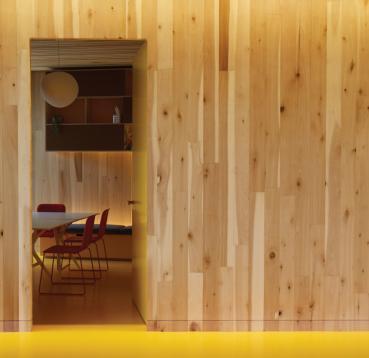-

-
ENDLESS STAIR
A never-ending staircase designed by architects dRMM, engineered by Arup and constructed from American tulipwood CLT.
-
-
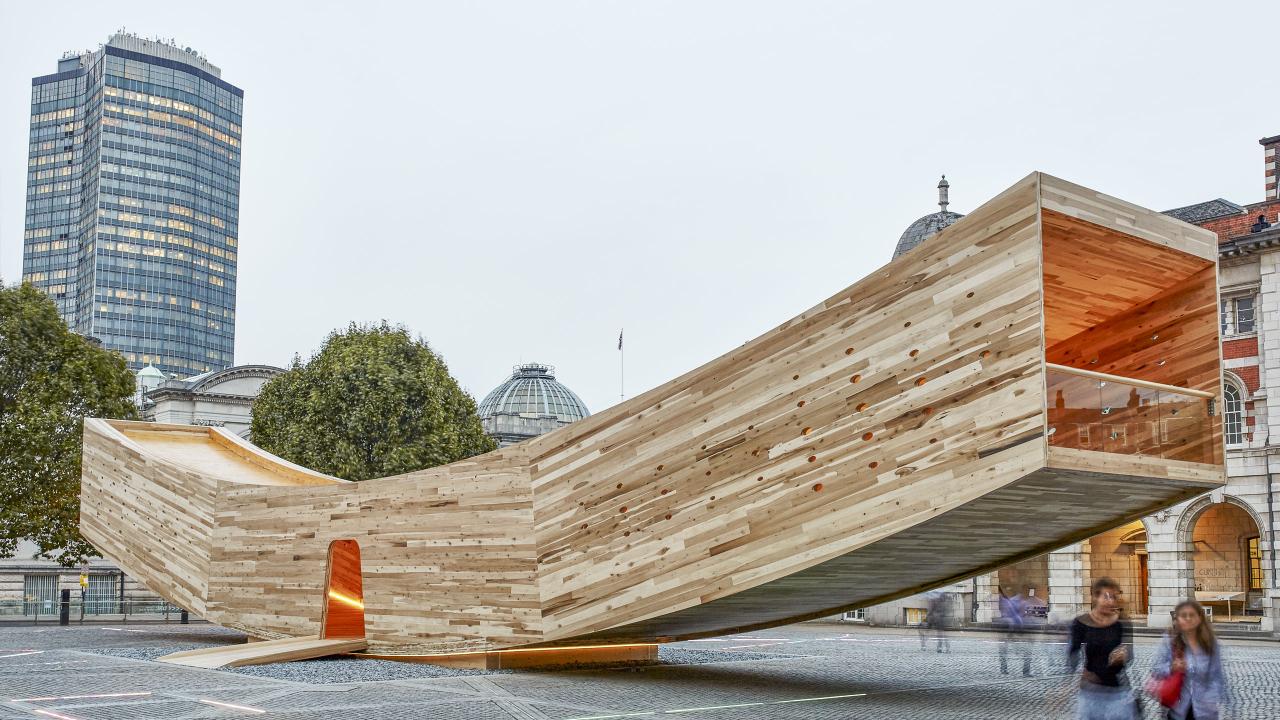
-
THE SMILE
The most ambitious CLT structure ever made was constructed from panels of American tulipwood CLT (some of them pre-curved) in this pavilion, designed by Alison Brooks Architects and engineered by Arup.
-
-
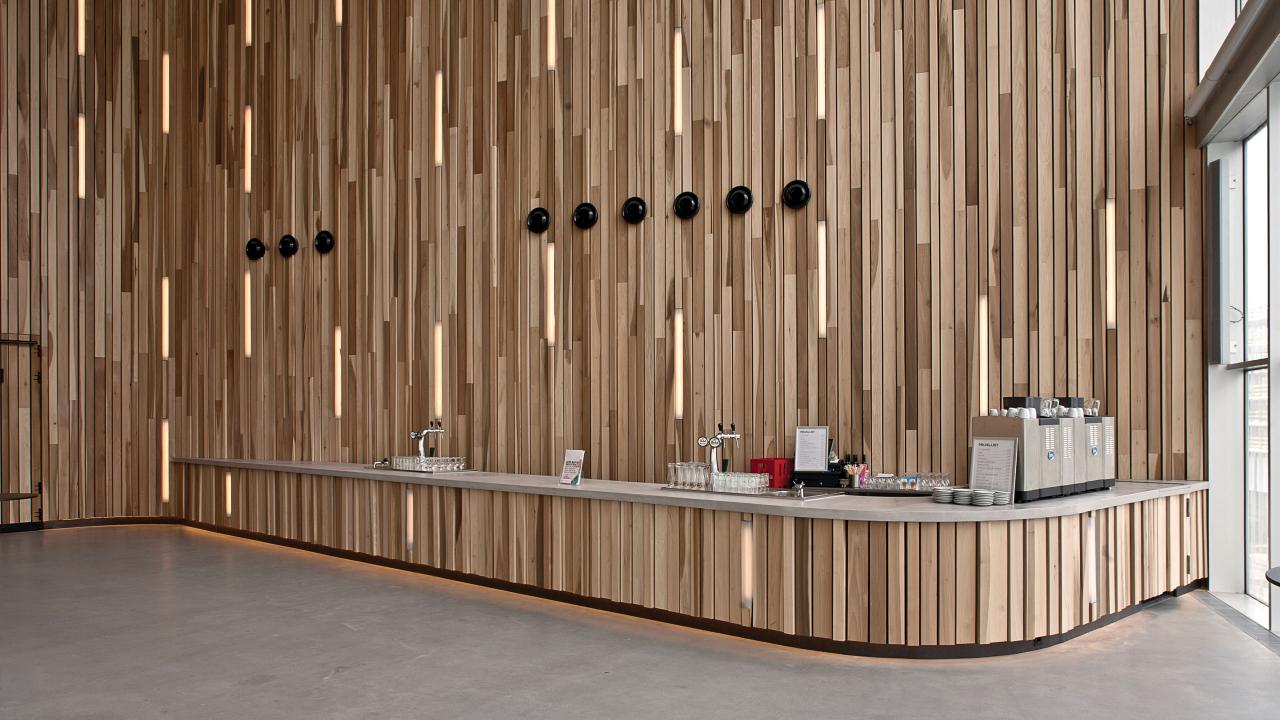
-
KUNSTCLUSTER
Frits van Dongen and Patrick Koschuch specified American tulipwood for the curved walls of the Kunstcluster (Art Cluster) in the Dutch city of Nieuwegein for its varied natural tones.
-
-
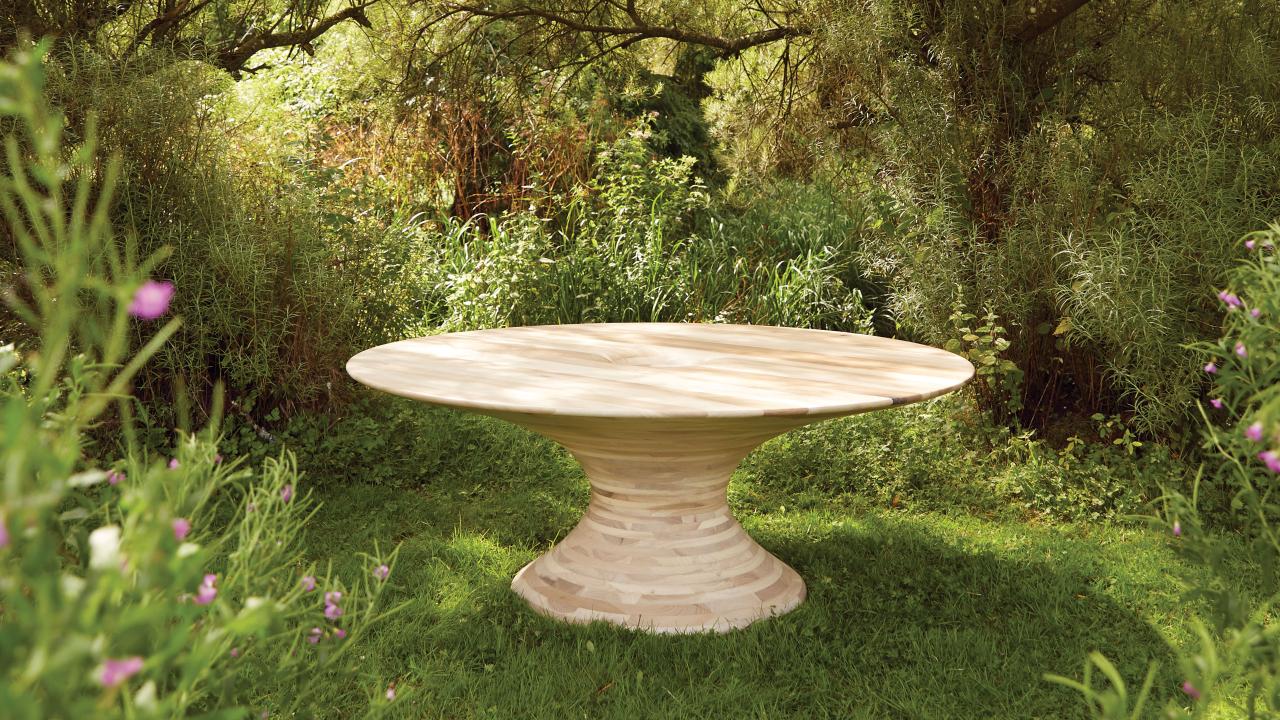
-
TABLE TURNED
Ten leaders in design commissioned ten emerging designers to create the object they have always wanted for The Wish List, a project initiated by AHEC. Table Turned was Alex de Rijke’s wish, designed and made for him by Barnby and Day Cox using American tulipwood.
-
-
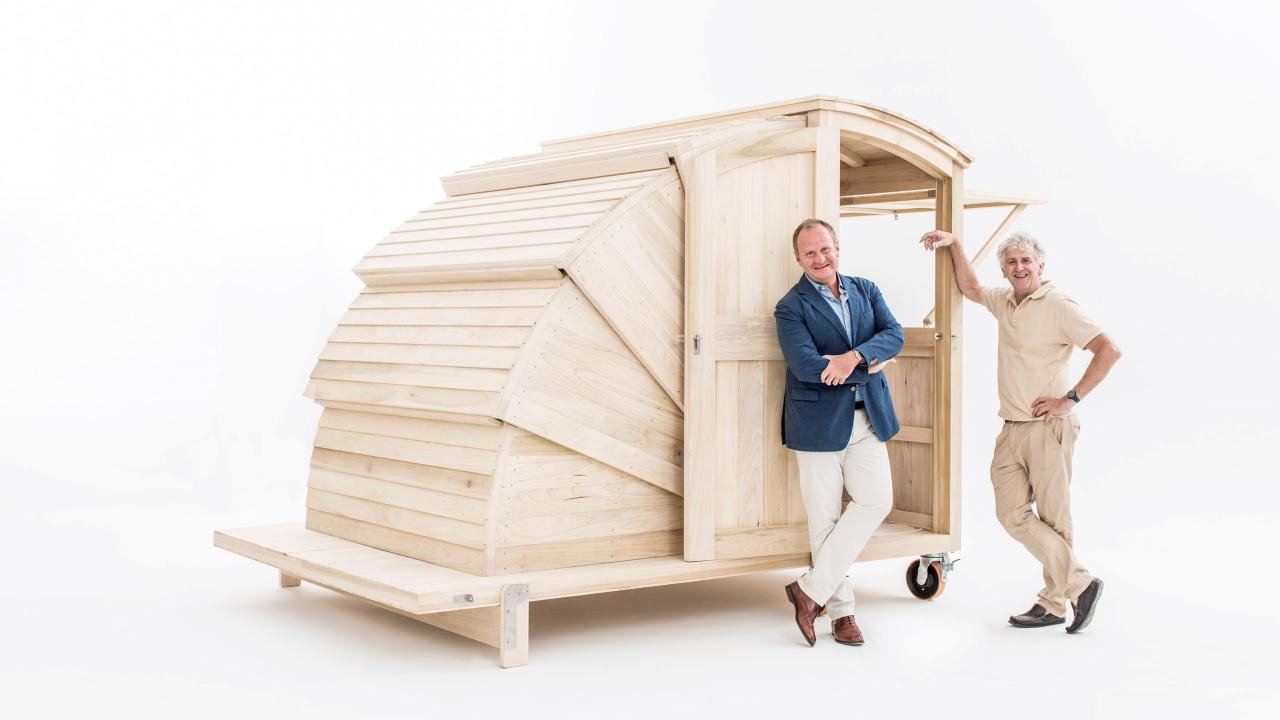
-
LIMITING FACTOR
The Workshop of dreams unites four of Spain’s most exciting architects and designers, with inspiring talents from diverse cultural fields. Jacob Benbunan, of Saffron Brand Consultants, realised paleoanthropologist, Juan Luis Arsuaga’s dream of a wooden cabin, using American tuliopwood.
-
American tulipwood
Commercially American tulipwood is one of the most prolific hardwood species from the U.S. hardwood forests and is unique to North America, having been eliminated in Europe by the last ice age.
Latin Name
Liriodendron tulipifera
Other Common Names
yellow poplar, tulip poplar, canary whitewood; not to be confused with European or Chinese poplar
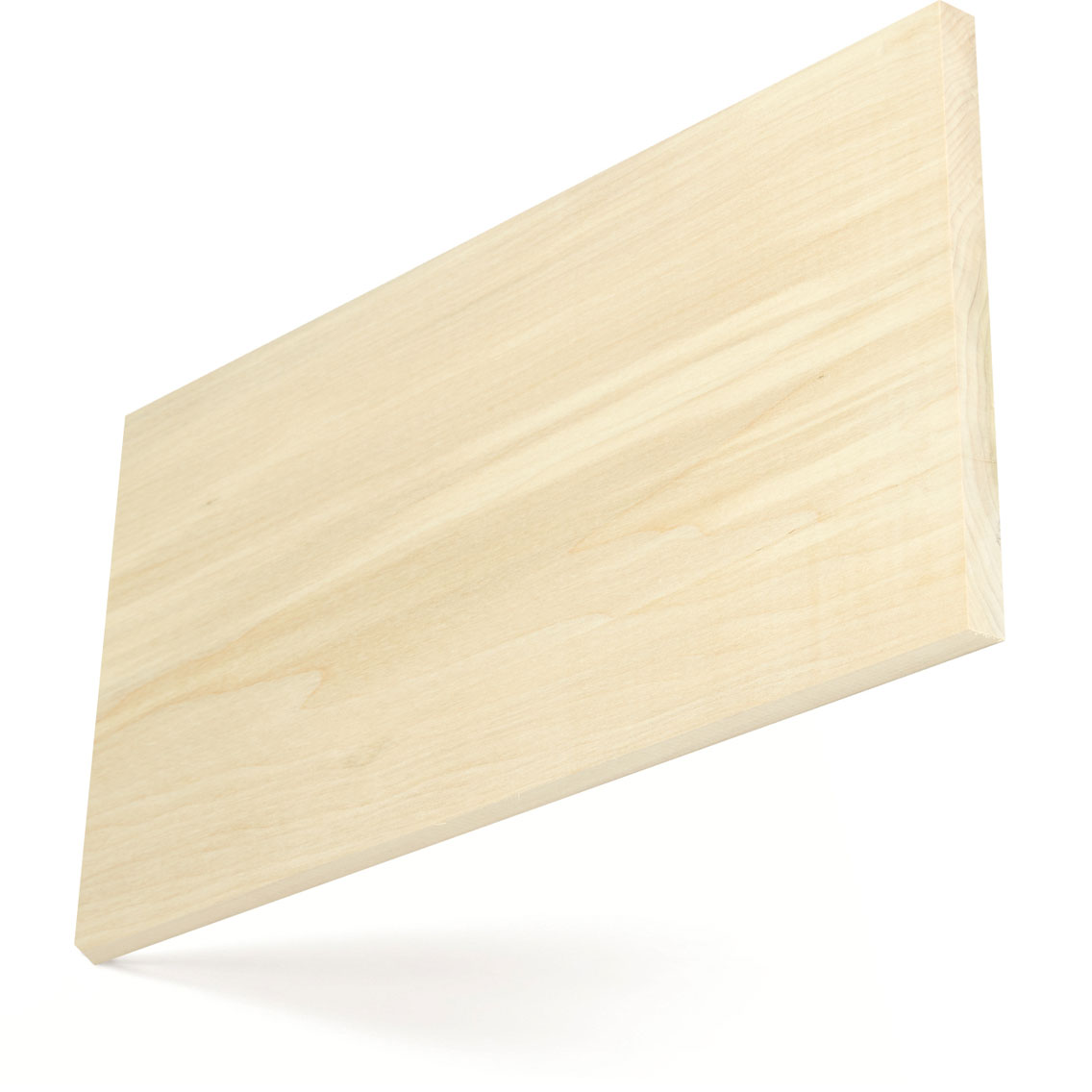
Forest Distribution
Tulipwood trees grow exclusively in North America and are widely distributed throughout most of the eastern United States in mixed hardwood forests. It is a single species and is not a poplar (Populus) being a Magnoliacae producing wood that is superior to the many poplar species. The trees are huge and identified by their tulip-like flowers giving rise to the name. Tulipwood grows from north to south and is one of the most sustainable hardwoods in the USA.
FOREST GROWTH
FIA data shows U.S. tulipwood growing stock is 1.12 billion m3, 7.7% of total U.S. hardwood growing stock. American tulipwood is growing 34.6 million m3 per year while the harvest is 12.8 million m3 per year. The net volume (after harvest) is increasing 21.8 million m3 each year. U.S. tulipwood growth exceeds harvest in all states.
LCA Tool
seconds
Material Availability
Tulipwood from the USA is readily available as sawn lumber in a wide range of grades and thicknesses (4/4” through to 16/4”) due to its ease of drying. A relative knot free timber average lumber widths and lengths can be higher than other commercial species. Tulipwood is used in plywood production but with more limited availability as decorative veneer. The sapwood produces the often preferred whiter wood, as the heartwood usually exhibits strong colour variation. However the use of unsorted tulipwood displaying all its natural colour variation is on the increase, especially in Europe. Tulipwood is sold domestically, and sometimes referred to in export, as ‘poplar’ but should not be confused with European or Chinese poplar.
Wood Description
Tulipwood has less strong grain characteristic than species such as ash and oak, and is more like maple in character but darker in colour. However, there is a marked difference between the sapwood and heartwood of tulipwood. The sapwood is creamy white whereas the heartwood can vary from pale yellow or brown and even green to purple in extreme cases. The wood darkens with time on exposure to UV light and the green colour will turn brown. The wood of tulipwood is straight-grained with a medium to fine texture.
Mechanical Properties
Tulipwood has extraordinary overall strength properties relative to weight, making it highly suitable for structural applications, such as glue-laminated beams and cross laminated timber (CLT). The wood has relative low density, with high bending, shock resistance, and stiffness values, but is lower in compression and hardness. The wood has medium steam-bending capability and is extremely stable when fully dry and not installed in humid conditions. It is easy to finish and stain, so is highly suitable for furniture and joinery.
To find out more about the mechanical properties of tulipwood read the full structural guide.
-
0.42
Specific Gravity (12% M.C.)
449 kg/m3
Average Weight (12% M.C.)
9.80%
Average Volume Shrinkage (Green to 6% M.C.)
69.640 MPa
Modulus of Rupture
10,894 MPa
Modulus of Elasticity
38.198 MPa
Compressive strength (parallel to grain)
2,402 N
Hardness
Oiled / Un-Oiled Appearance


Performance
- Tulipwood lumber is easy to machine, plane, turn and glue with good performance screwing, although pre-boring is recommended. It tends to split when nailed. Tulipwood can easily be stained and polished to a very good finish. The wood can be susceptible to movement in performance in humid conditions.
- The wood is non-resistant to decay. The heartwood can be resistant to preservative treatment, whereas the sap is permeable. Overall, tulipwood can be considered for preservation with modern preservation treatment methods including thermal modification, to which it is particular suited.
Main Uses
This sustainably managed wood from natural forests of North America, with excellent environmental credentials, is a key species in many export markets. Its main uses are in furniture, doors, panelling, architectural interior joinery and mouldings and kitchen cabinets. It is also used in certain applications for construction and in some specialist applications such as carving.
Examples of Use
